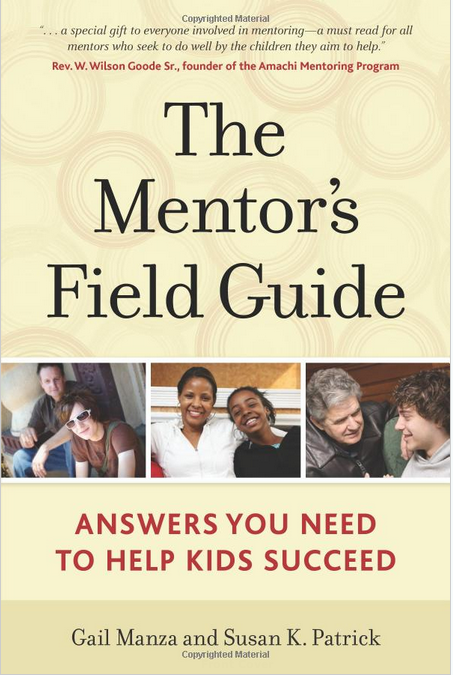The Mentor’s Field Guide: An essential reference for quality mentoring
Book review by Jean Rhodes
In their book, The Mentor’s Field Guide (MN: Search Institute), former MENTOR CEO Gail Manza and Founder of the Ct. Mentoring Partnership Susan Patrick have teamed up to produce an extremely useful resource for the field of youth mentoring. The book provides research-based, practically applicable information that is designed to develop and maintain strong mentor-mentee relationships. The format of the book is original and clever. It is structured around a series of common questions (culled from the authors’ collective years of experience and outreach), which arise in the everyday practice of youth mentoring. Although the book can be read all the way through, it is also likely to be used as an ongoing reference book. When a problem or question arises, readers can draw on the comprehensive subject index to find reassuring, sage advice.
Section I, the heart of the book, is framed as a series of 67 answers to the most common questions that arise in youth mentoring. The first chapter (21st century mentoring) delves into questions concerning the state of the art of youth mentoring (e.g., what are the different types of programs, are background checks routine?). The second chapter concentrates on the mentor-mentee relationship, including the nuances of building strong relationships (e.g., will talking about my own life and beliefs help my mentee open up to me?). Chapter 3 includes questions regarding the challenges, obstacles, and concerns that most mentors face over the course of their relationships, such as the limits of confidentiality and overcoming social and cultural barriers. By contrast, Chapters 4 and 5 cover issues and cirumstances that tend to be rare. (e.g., My mentee has a parent in prison. Should I bring this up?” ) Section II, “Resources for Strong Mentors,” offers considerable supplemental information, as well as materials for mentors, including the standards for quality mentoring, information about the stages of youth development, and resources for active mentors.
The book is clearly and intelligently written, and represents an essential (and long-overdue) resource for the field. Practitioners and mentors who are thirsty for knowledge that will improve their practice will find themselves turning to this book many times. It avoids the technical jargon that can so easily render such books incomprehensible and, importantly, it is focused on clear strategies for putting the latest research findings into practice. Stanford University Professor Philip G. Zimbardo once noted that it was time to “start considering how best to translate what we knew into a language that most ordinary citizens could understand and even come to appreciate.”
The Mentor’s Field Guide book does just that. It makes research findings accessible and aggregates years and years of research and practice wisdom into one comprehensive reference book. This book is an invaluable resource in our efforts to advance the practice of youth mentoring.









